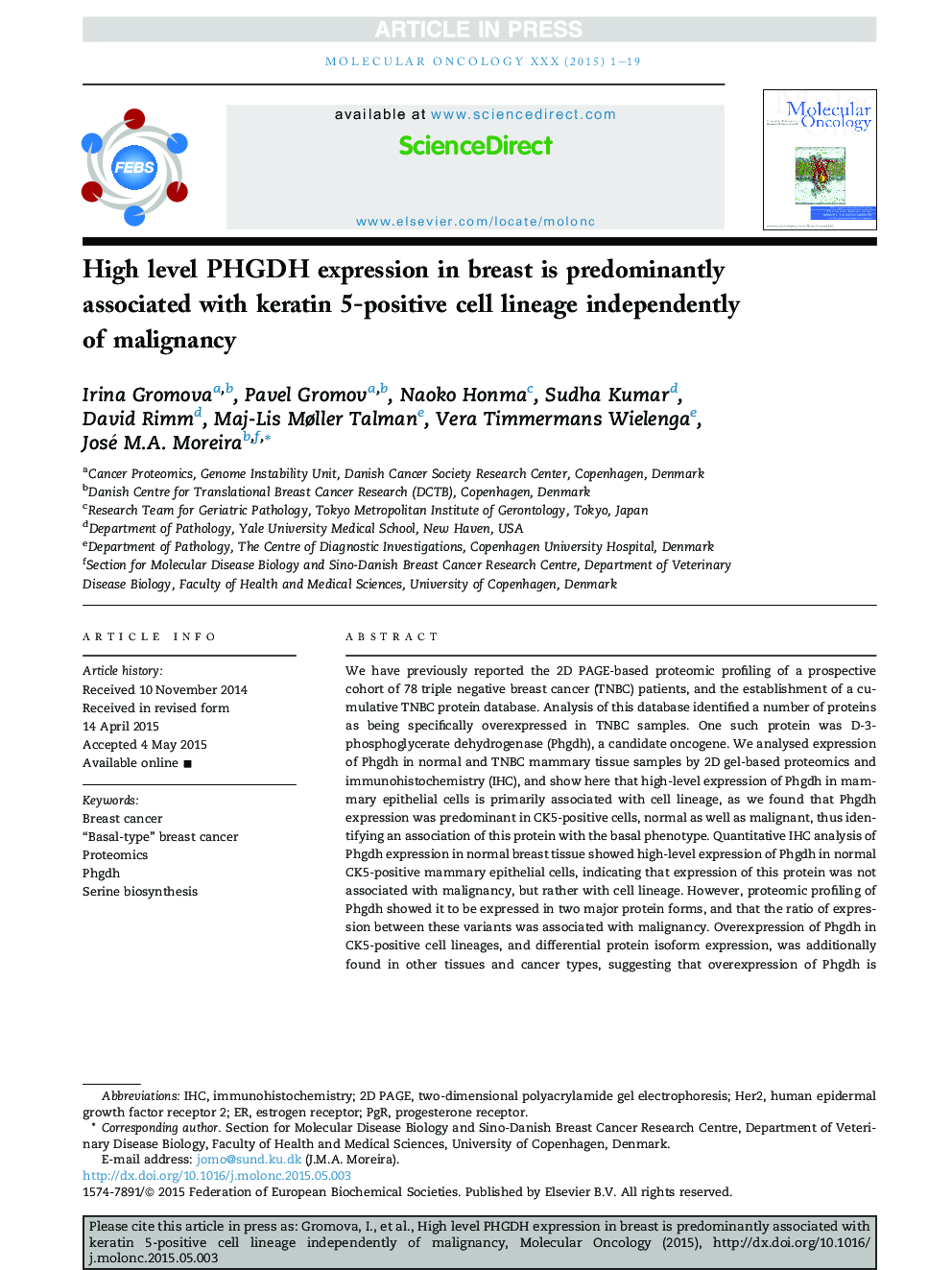| Article ID | Journal | Published Year | Pages | File Type |
|---|---|---|---|---|
| 10914706 | Molecular Oncology | 2015 | 19 Pages |
Abstract
We have previously reported the 2D PAGE-based proteomic profiling of a prospective cohort of 78 triple negative breast cancer (TNBC) patients, and the establishment of a cumulative TNBC protein database. Analysis of this database identified a number of proteins as being specifically overexpressed in TNBC samples. One such protein was D-3-phosphoglycerate dehydrogenase (Phgdh), a candidate oncogene. We analysed expression of Phgdh in normal and TNBC mammary tissue samples by 2D gel-based proteomics and immunohistochemistry (IHC), and show here that high-level expression of Phgdh in mammary epithelial cells is primarily associated with cell lineage, as we found that Phgdh expression was predominant in CK5-positive cells, normal as well as malignant, thus identifying an association of this protein with the basal phenotype. Quantitative IHC analysis of Phgdh expression in normal breast tissue showed high-level expression of Phgdh in normal CK5-positive mammary epithelial cells, indicating that expression of this protein was not associated with malignancy, but rather with cell lineage. However, proteomic profiling of Phgdh showed it to be expressed in two major protein forms, and that the ratio of expression between these variants was associated with malignancy. Overexpression of Phgdh in CK5-positive cell lineages, and differential protein isoform expression, was additionally found in other tissues and cancer types, suggesting that overexpression of Phgdh is generally associated with CK5 cells, and that oncogenic function may be determined by isoform expression.
Keywords
Related Topics
Life Sciences
Biochemistry, Genetics and Molecular Biology
Cancer Research
Authors
Irina Gromova, Pavel Gromov, Naoko Honma, Sudha Kumar, David Rimm, Maj-Lis Møller Talman, Vera Timmermans Wielenga, José M.A. Moreira,
